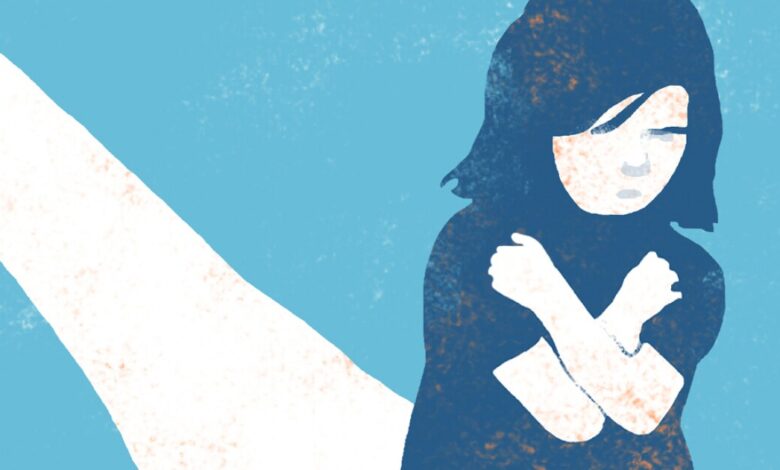Trauma and Social Anxiety Are Growing Mental-Health Concerns for College Students

[ad_1]
Trauma and social anxiety are both increasing among college students seeking on-campus mental-health treatment, according to a new report from the Center for Collegiate Mental Health at Pennsylvania State University.
The report, released Wednesday, also examined the connection between mental health and academic success, finding that students with certain mental-health risk factors were more likely than their peers to drop out of college. Students’ mental health improved more when they stayed enrolled, rather than dropping out.
The report is based on data from counseling centers at 180 colleges and universities, representing nearly 200,000 students.
The results paint a nuanced picture of how students are doing: The share of students who came to counseling centers with anxiety concerns remained flat between 2021 and 2022, and the share of students concerned about depression and suicidal ideation declined slightly. Students’ self-reported levels of anxiety and depression rose slightly over the same period, while self-reported levels of academic distress declined slightly. Academic distress remained higher than it was before the pandemic.
Over all, though, it’s clear that students are struggling: Over the past 12 years, students’ anxiety and depression have gradually risen.
Brett E. Scofield, executive director of the Center for Collegiate Mental Health, said that the report’s findings show that counseling services are essential to student retention.
“When students improve during treatment at counseling centers, they’re more likely to remain in school,” Scofield said.
Increased Reporting of Trauma
The prevalence of students who reported a history of trauma when they first sought counseling services has increased more over the past 10 years than any other aspect of their mental-health-treatment history, including prior counseling, medication use, hospitalization, and treatment for alcohol use. Trauma, as assessed by clinicians in a student’s initial visit to a counseling center, also increased over the past decade.
The report attributed the increase in students reporting trauma to childhood emotional abuse and sexual violence. The traumatic events that students described were increasingly likely to have occurred several years ago, as opposed to recently.
Scofield said there are a few hypotheses as to why trauma has been on the rise. He said students may be more open to reporting traumatic events than in the past. Additionally, colleges and universities may have improved their reporting systems for traumatic incidents, he said, given the increased scrutiny of campus sexual assault over the past decade.
Rising Social Anxiety
The number of students experiencing social anxiety increased significantly from 2021 to 2022, and it was the psychological symptom with the greatest change over the past 12 years. Cases of depression and generalized anxiety have also risen steadily for the past decade.
Scofield said increased social-media usage and the effects of the Covid-19 pandemic and students returning to in-person learning may have contributed to the marked rise in social anxiety.
“If you think about the gradual increase over the last 12 years, it’s possible that those long-term increases were related to increasing levels of isolation students were feeling and some of the social-comparison processes that are commonly felt or experienced through social-media usage,” Scofield said.
Who Drops Out?
About 3 percent of students who used campus counseling services between 2017 and 2022 dropped out of college voluntarily. That’s according to data from about 156,000 students who sought treatment at 95 institutions.
Some demographic groups were found to have higher dropout rates: students with diverse gender identities, students with disabilities, first-year students, and military veterans. Students who identified as racially diverse, transfer students, first-generation students, and international students were less likely to withdraw, on average.
The report did not collect data on the specific reasons that students withdrew from college, Scofield said. But several factors increased students’ likelihood of stopping their studies. Dropout rates among students who reported histories of psychiatric hospitalization or alcohol and drug abuse were almost double those of the average student in counseling. Financial stress also increased students’ risk of dropping out. Students who were involved in extracurriculars and who had family or social support were less likely to leave college.
First-year students who experienced increased academic distress and had a history of psychiatric hospitalization when they started treatment at a counseling center were 48 percent more likely to withdraw from college, compared to the average student who sought counseling. Being involved in an extracurricular reduced these students’ risk of withdrawing by 12 percent.
Scofield said the report’s findings highlight the importance of counseling centers, but show that they are not the only safety net students need.
“It’s important to support counseling centers, and also to recognize that counseling centers are only a piece of the larger comprehensive support systems that are necessary to promote students’ success,” Scofield said.
[ad_2]
Source link






